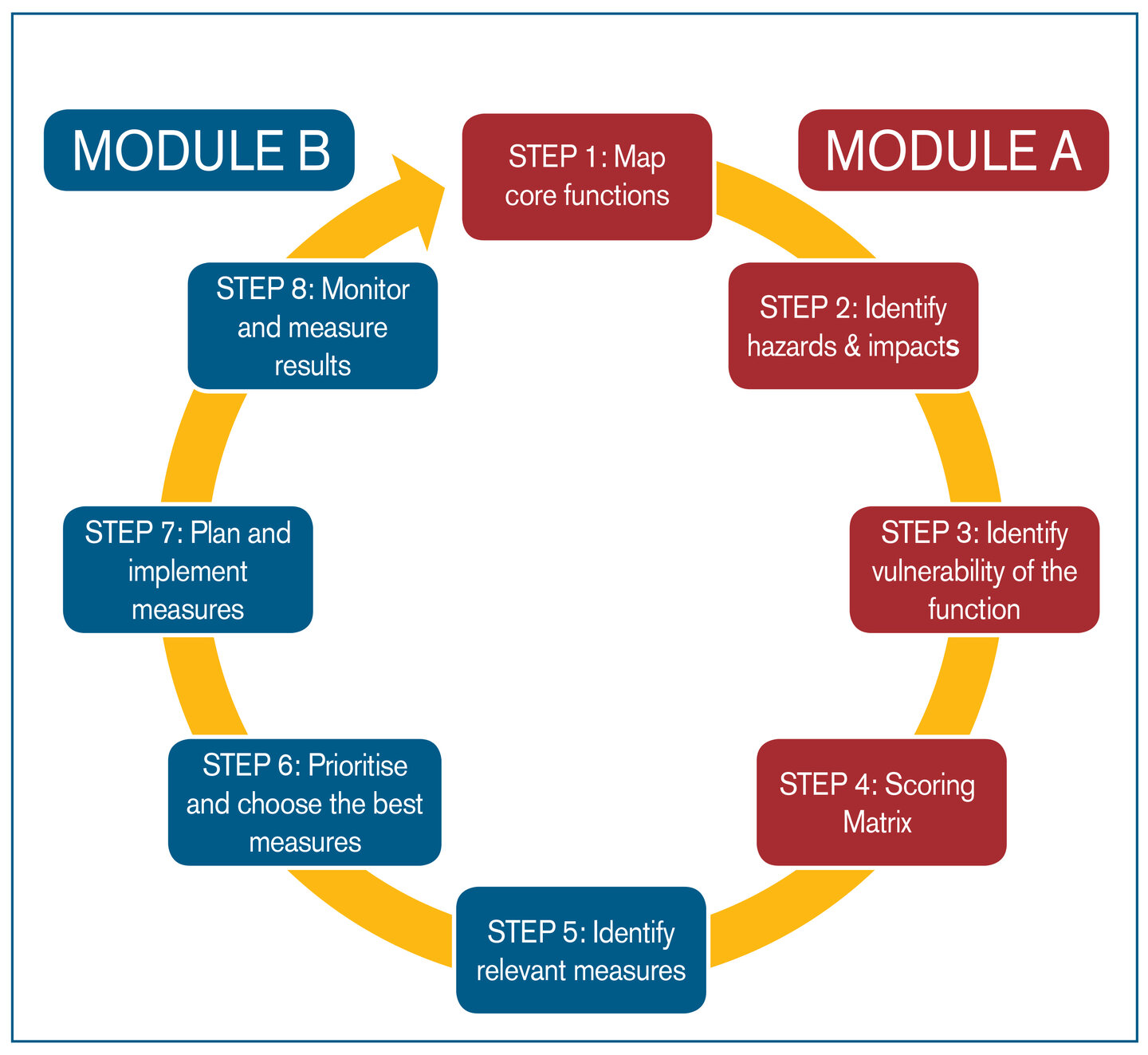In its first hands-on applications in Nepal and Madagascar, the Guideline proved to effectively support the shift from reaction to proactively addressing climate variability and supporting changes in market systems. It also allows identifying new opportunities in a changing climate.
-
Guideline - Assessing Climate Risks and Vulnerabilities in Market SystemsPDF (0.98 MB)
-
Guideline BriefPDF (0.23 MB)
-
Guide : Evaluation des risques et vulnérabilités climatiques dans les systèmes de marchéPDF (31.42 MB)
-
Guía – Evaluación de los Riesgos y las Vulnerabilidades Climáticas en los Sistemas de MercadoPDF (2.99 MB)
The Guideline in a nutshell
The Guideline helps (small-scale) businesses in better understanding climate risks and opportunities in their sub-sector, identifying emerging market opportunities and developing a comprehensive climate risk management approach for the enterprise. The overall objective of the Guideline is to identify the most climate-resilient sub-sectors in a given context and to determine potential impacts and relevant measures in the field of adaptation to climate change and disaster risk management to further increase resilience in the market system.
The Guideline combines two approaches: (i) the adaptation process and (ii) the market system development approach. The joint approach leads to a series of eight steps, structured according to MODULE A and MODULE B. In short, the Guideline is not a new tool, but builds on existing approaches (i.e. risk assessment tools such as the Community-based Risk Screening Tool, Adaptation & Livelihoods – CRiSTAL; the Climate, Environment Disaster Risk Integration Guidance – CEDRIG; and approaches related to market systems development).
8-STEP Approach Towards Climate Risk Resilient Sub-Sectors

With the support of MODULE B, the most appropriate measures for adapting to climate change and managing disaster risks will be identified, resulting in increased climate resilience of the sub-sector in a given context. For the final measures selected, the stakeholders jointly develop an Action Plan (Sustainability Matrix) defining each actor’s role and responsibility in the system (i.e. who will do it and who will pay for it).
In sum, the Guideline is an effective, simple, low-cost instrument for single use and/or comparative purposes. It helps practitioners to approach development issues systematically and to balance economic, social, political and ecological in a sustainable way. Hence it is an effective Policy Dialogue Instrument for development organizations facilitating such processes.
Experiences
If you have a story to share about using the Guideline in your context, please send it to us and we will upload it to this website with pleasure.
Concluding Remark
Last but not least, different actors have different stakes in the market system, but rely on each other’s performance. This requires all the actors to review their role, their possible contributions and their necessary actions towards concentrated efforts to climate change adaptation and risk management.
Further Information
Downloads
-
Identification of Most Relevant Hazards in the Market System (table 1)DOCX (0.1 MB)
-
Detailed Risk Assessment - Identification of Major Hazards, Impacts and Coping Strategies (table 2)DOCX (0.1 MB)
-
Hazard and Crop Seasonal Calendar (table 3)DOCX (0.09 MB)
-
Determine Climate Risk Relevant Functions (table 5)DOCX (0.09 MB)
-
Scoring Matrix (table 6)DOCX (0.1 MB)
-
Identify Climate Adaptation and Disaster Risk Management Options (table 7)DOCX (0.09 MB)
-
Prioritisation of Most Appropriate Climate Adaptation and Disaster Risk (table 8)DOCX (0.1 MB)
-
Sustainability Matrix (Action Plan) (table 9)DOCX (0.09 MB)
-
Results Chain and Measurement Plan (table 11)DOCX (0.09 MB)
-
Banana Field TestPDF (0.96 MB)
-
Charcoal Field TestPDF (0.34 MB)
-
Coffee Field TestPDF (1.14 MB)
-
Macadamia Field TestPDF (1.03 MB)
-
Riverbed Vegetables Field TestPDF (0.26 MB)

